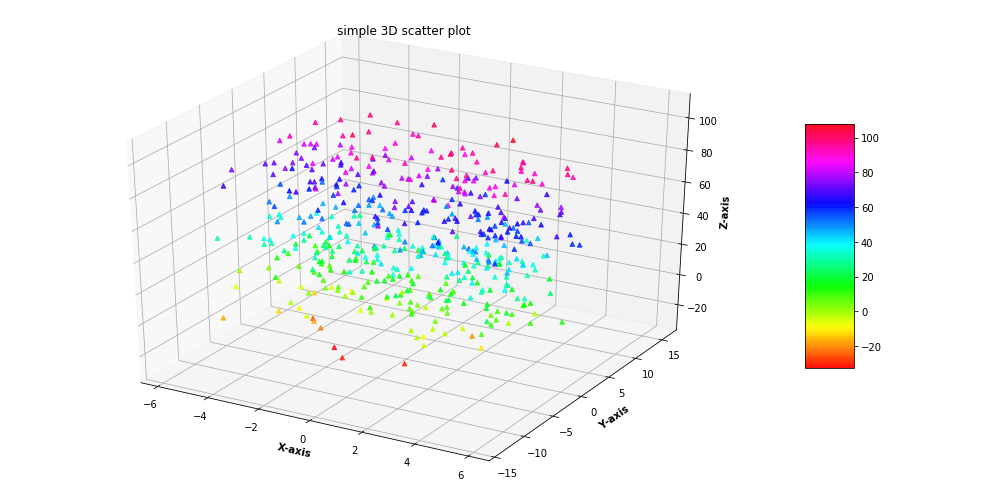

(I added some nice indexing slicing in order to get the even and odd parts) # plotting and creating an interactive figureįrom mpl_interactions import ipyplot as ipltĬtrls = iplt.scatter(indexer(sols, "T"), indexer(sols, "T"), T=np.arange(50))Ĭtrls.save_animation('out. setdata (xdata, ydata) return ln, ani FuncAnimation (fig, update, frames np. setylim (-1, 1) return ln, def update (frame): xdata. In your case you could drop the animate function and just do the following for making a plot. (x, y, sNone, cNone, markerNone, cmapNone, normNone, vminNone, vmaxNone, alphaNone, linewidthsNone,, edgecolorsNone, plotnonfiniteFalse, dataNone, kwargs) source. import numpy as np import matplotlib.pyplot as plt from matplotlib.animation import FuncAnimation fig, ax plt. Mentioned below is the code I am import numpy as np import matplotlib.pyplot as plt from mpltoo. In both cases it is critical to keep a reference to the. Hello, with the reference link I am trying to plot a scatter graph for the sensor I am working with in 3d axis using animation package in matplotlib. Pastebin is a website where you can store text online for a set period of time.Īlso you can avoid having to deal with things like set_offsets if you use mpl-interactions which makes it easy to make dynamic plots where you control parameters (in this case time) using sliders and then to save animations of them. The easiest way to make a live animation in Matplotlib is to use one of the Animation classes. is the number one paste tool since 2002. Pastebin import matplotlib.pyplot as pltimport numpy as npfrom scipy.integrate import.

Scatter = plt.scatter(,, animated=True)Īnim = FuncAnimation(fig, func=animate, frames=N, init_func=partial(init, fig, axes, scatter), blit=True, fargs=(sols, scatter, odds, evens), repeat=False) Sols = odeint(van_der_pol, init_conds, t, args=(mu, evens, odds, ones))įig, axes = plt.figure(), plt.axes(frameon=True) Init_conds = np.array()Įvens, odds = np.array(), np.array() #will be used to extract the x and y coordinates t_offsets(np.array(*evens), np.trim_zeros(sols*odds)])) X_shift = np.roll(x, 1) #for use in computationĭef animate(t, sols, scatter, odds, evens):

Any help would be greatly appreciated!įrom matplotlib.animation import FuncAnimationĭef van_der_pol(coords, t, mu, evens, odds, ones):

The output should look like fluid rotating. When I try to animate, however, I get a mess (so I think it has to be in how I’m animating it). I know the computations and data set are right because when I plot each frame individually I get the desired result. import matplotlib.animation as animation def sincos(deg): fact sp.pi/180. Enable the category labels so you can actually see which country is moving (unlike the orginal gapminder graph).Hey, I’ve been at this for a couple hours so hopefully y’all have better luck. Line plots, histograms, scatter plots etc. Make a scatter plat with Country as Details, Life expectancy as X-axis, GDP as Y-axis and year as play axis. I selected some countries and used labels. In PowerBI, I created an animated scatter plot with a subset of data. Animated line plot Oscilloscope MATPLOTLIB UNCHAINED Animated image using a precomputed list of images. Alternatively, on MacOS or Linux, a virtual environment can be set up with a terminal prompt and pip (the Python package manager). OK, now you can just export the dataframe to a CSV file. You can create a new virtual environment by opening the Anaconda Prompt and typing: Using the Anaconda Prompt: > mkdir liveplot > cd liveplot > conda create -y -n liveplot python3.7. def year_to_column(year): yearstring = str(year)+" " return yearstring startyearcolname =year_to_column(startyear) columns=() startyearcol=columns.index(startyearcolname) datalist= for country in countries: i=0 for year in years: j=0 yearlist= for field in fields: fieldlist = dfworldbank=country) & (dfworldbank=field)].values.tolist() yearlist.append(fieldlist) j=j+1 i=i+1 yearlist=reduce(lambda x,y: x+y,yearlist) datalist.append(+yearlist) df = pd.DataFrame(datalist,columns=+fields) df.head()Īs you see in the code below I select every series value for every country-year combination. To arrive to this dataframe I loop through the countries, series/fields and years to make a data list containing the series value for every country and year.


 0 kommentar(er)
0 kommentar(er)
